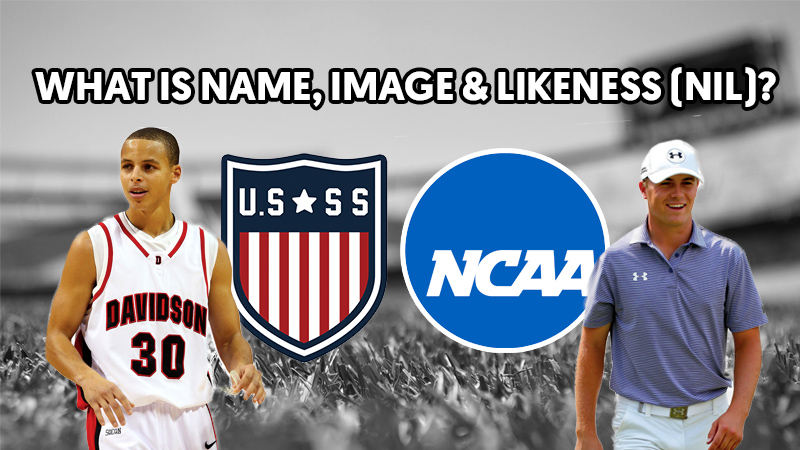Navigating the New Era: A Comprehensive Exploration of the Name, Image, and Likeness (NIL) Ruling in College Sport
Introduction:
In recent years, the once steadfast foundation of college sports in the United States has undergone a revolutionary transformation with the groundbreaking introduction of the Name, Image, and Likeness (NIL) ruling. This paradigm shift has redefined the boundaries of amateurism and opened up unprecedented opportunities for student-athletes to capitalise on their own brand. In this extensive exploration, we delve into the evolution of the NIL ruling, its profound impact on collegiate athletics, the empowerment of student-athletes, and the challenges and concerns that accompany this seismic shift.
I. The Evolution of the NIL Ruling:
To understand the significance of the NIL ruling, it’s essential to trace its roots and acknowledge the forces that propelled its emergence. Traditionally, student-athletes were shackled by NCAA regulations that strictly prohibited them from profiting off their name, image, and likeness. This outdated model came under increased scrutiny as athletes, advocates, and the public questioned the fairness of a system that allowed universities and governing bodies to reap substantial financial gains while restricting the earning potential of the very individuals driving the spectacle.
The turning point came with landmark cases like Ed O’Bannon’s lawsuit, which underscored the fundamental inequities within collegiate athletics. These legal battles laid the groundwork for a reevaluation of the existing system and set the stage for a more equitable approach that recognises the value of student-athletes’ contributions beyond the playing field.
II. Empowering Student-Athletes:
The NIL ruling has ushered in a new era of empowerment for student-athletes, granting them the autonomy to monetise their talents and personal brand. No longer bound by the restrictive NCAA rules, athletes can now engage in endorsement deals, promote products, and explore various commercial opportunities without jeopardising their eligibility. This newfound agency not only provides financial stability for student-athletes but also allows them to cultivate their own brand identity.
Beyond the financial benefits, the NIL ruling has democratised opportunities for athletes across all sports. While previously, the spotlight shone brightest on high-profile programs, the ruling enables athletes from non-revenue sports to showcase their talents and personality on a broader stage. This levelling of the playing field not only benefits individual athletes but enriches the overall landscape of collegiate sports.
III. Impact on Collegiate Athletics:
The ripple effects of the NIL ruling extend far beyond individual athletes. Universities and athletic programs find themselves navigating uncharted territory, adapting to the complexities of this new landscape. Strategies are being developed to support athletes in maximising their opportunities while safeguarding the institutions’ brand and reputation.
The influx of sponsorship and endorsement deals into college sports is reshaping the economic dynamics of the industry. Boosters, businesses, and brands are increasingly investing in college athletes, recognizing the marketing potential of aligning themselves with these rising stars. This injection of additional revenue into the collegiate sports ecosystem presents a paradigm shift, diversifying revenue streams and potentially mitigating financial challenges faced by athletic departments.
IV. Challenges and Concerns:
While the NIL ruling represents a monumental step towards a fairer system, it is not without its challenges and concerns. A primary consideration is how to maintain a level playing field. There is a delicate balance to be struck between empowering athletes to capitalise on their NIL rights and preventing the undue influence of financial incentives on recruiting and team dynamics.
Additionally, concerns persist regarding the potential prioritisation of individual branding over team success. As athletes become more immersed in endorsement deals and off-field opportunities, questions arise about how this might impact their commitment to the collective goals of their teams. Striking the right balance between individual empowerment and team cohesion is an ongoing challenge that requires careful consideration.
Another critical aspect is the potential for exploitation, especially among younger athletes who may lack the experience to navigate the complex world of endorsements and sponsorships. Ensuring that student-athletes receive adequate education and guidance to make informed decisions about their brand partnerships is crucial to protecting their interests.
Conclusion
The NIL ruling stands as a transformative force that has ushered in a new era for college sports, challenging the conventional norms and empowering student-athletes in unprecedented ways. As the landscape continues to evolve, stakeholders must adapt to this paradigm shift, finding innovative solutions that ensure a fair and sustainable future for collegiate athletics.
This ruling represents not just a change in policy but a seismic shift in the very fabric of college sports. Its implications reach beyond the financial gains for individual athletes, impacting the economic dynamics of universities and the broader collegiate sports ecosystem. The NIL ruling has prompted a reevaluation of the fundamental principles that have long governed collegiate athletics, demanding a recalibration of the balance between amateurism and the commercial realities of modern sports.
In navigating this uncharted territory, it is imperative for universities, athletic programs, and the NCAA to collaborate in establishing guidelines that preserve the integrity of collegiate sports while embracing the newfound opportunities for student-athletes. The NIL ruling is a catalyst for change, and its effects will undoubtedly continue to reverberate, shaping the trajectory of college sports for years to come. For our signed athletes they are given all the support and guidance needed to ensure they know their rights when it comes to Name, Image, Likeness rulings.
